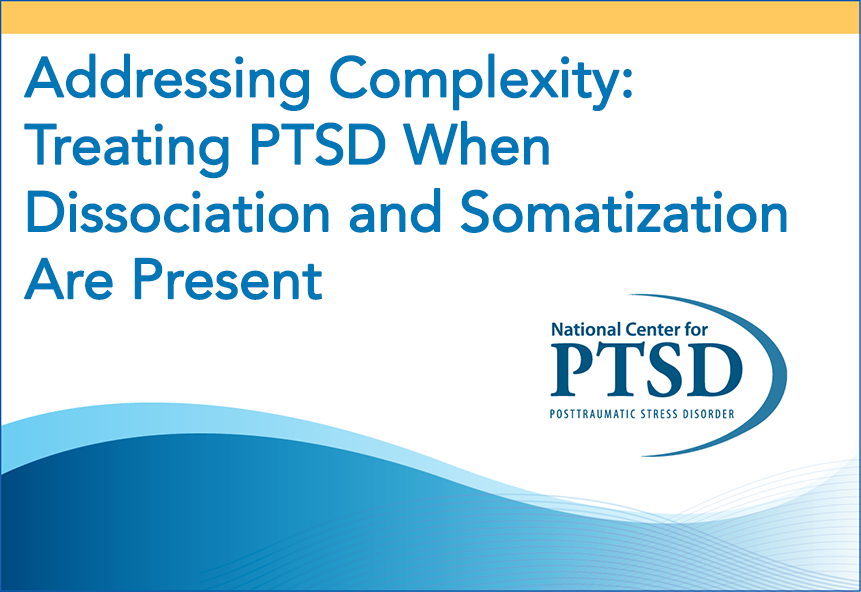PTSD: National Center for PTSD
Addressing Complexity: Treating PTSD When Dissociation and Somatization Are Present
Continuing Education
This section brings together free in-depth Continuing Education resources for the Professional community concerned with trauma.
Addressing Complexity: Treating PTSD When Dissociation and Somatization Are Present
- Date Created: 07/09/2025
- Time to Complete: 1 hour
- Credits: ANCC, APA, ASWB, ACCME, NBCC, Other Orgs
- Skill Level: Intermediate
- Course Series: PTSD 101, PTSD Consultation Lecture Series
 Author(s):
Author(s):
Description
Complex presentations of PTSD may include dissociation and somatization. Such complexities may lead both clinicians and patients to hesitate to engage in an evidence-based treatment for PTSD, including the trauma-focused psychotherapies which are recommended by the 2023 VA/DoD Clinical Practice Guideline for PTSD. Research offers valuable considerations for assessment and treatment of challenging presentations or where there is diagnostic complexity.
This course will help clinicians to identify and conceptualize dissociation and somatization presentations as trauma reactions within a PTSD case conceptualization framework. The authors share measurement tools to encourage assessment and diagnosis and review clinical suggestions to support first-line and second-line evidence-based PTSD treatment for Veterans with these complex presentations.
Goals and Objectives
- Discuss how individuals with PTSD may present with dissociation and somatization, and methods for assessment
- Describe methods to address dissociation and somatization PTSD reactions within evidence-based PTSD treatment
- Identify the ability to treat PTSD when dissociation and somatization are present


























